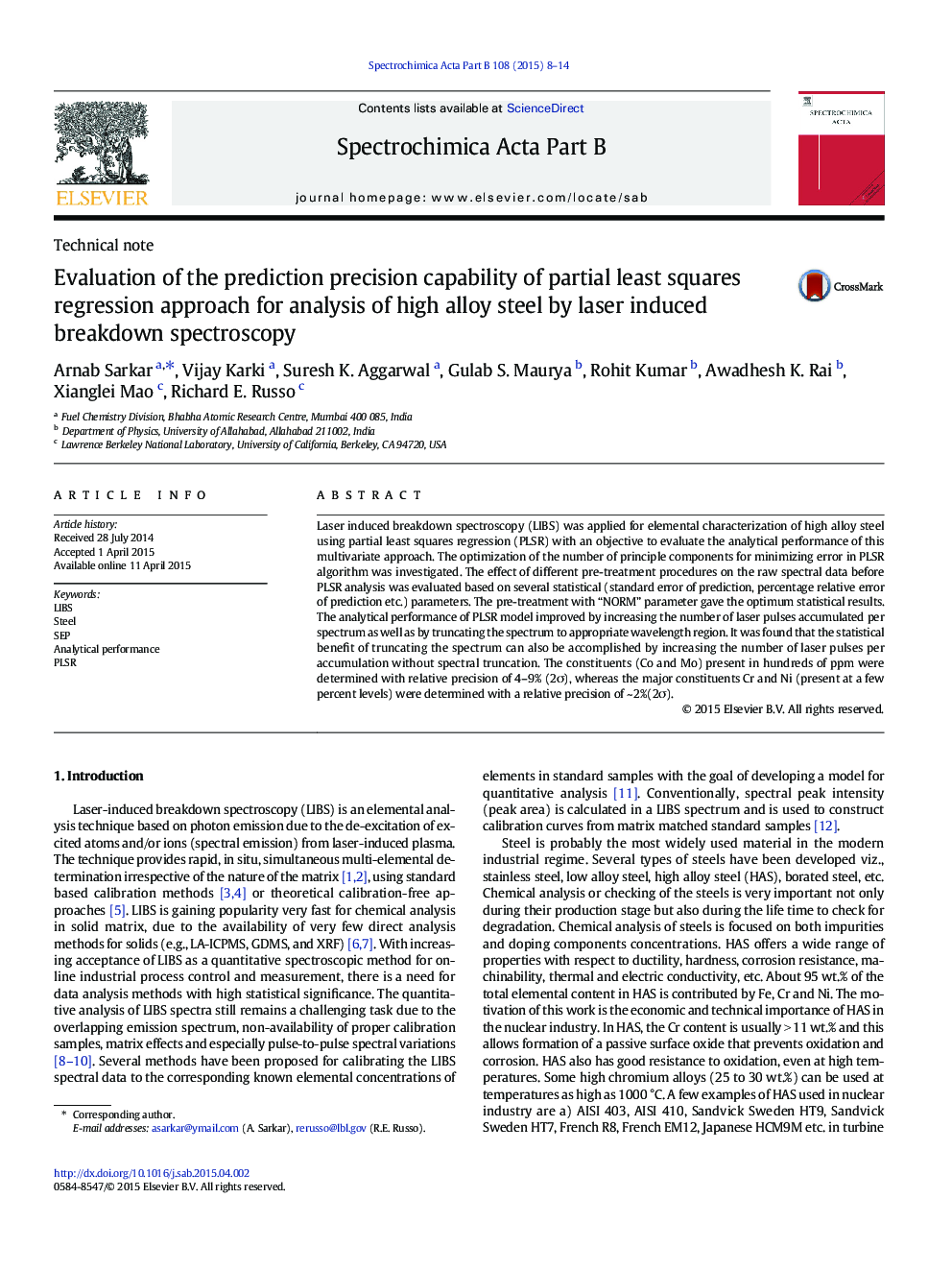| Article ID | Journal | Published Year | Pages | File Type |
|---|---|---|---|---|
| 1239589 | Spectrochimica Acta Part B: Atomic Spectroscopy | 2015 | 7 Pages |
•The quantification of Cr, Ni, Mn, Si, Co and Mo in steel by LIBS was carried out.•PLSR1 based multivariate calibration was used for construction of calibrations.•Alternative spectral pre-treatment procedures were applied on spectra.•The effect of selected regions of interest on PLSR1 was studied.•The effect of the number of laser shots per spectrum was studied.
Laser induced breakdown spectroscopy (LIBS) was applied for elemental characterization of high alloy steel using partial least squares regression (PLSR) with an objective to evaluate the analytical performance of this multivariate approach. The optimization of the number of principle components for minimizing error in PLSR algorithm was investigated. The effect of different pre-treatment procedures on the raw spectral data before PLSR analysis was evaluated based on several statistical (standard error of prediction, percentage relative error of prediction etc.) parameters. The pre-treatment with “NORM” parameter gave the optimum statistical results. The analytical performance of PLSR model improved by increasing the number of laser pulses accumulated per spectrum as well as by truncating the spectrum to appropriate wavelength region. It was found that the statistical benefit of truncating the spectrum can also be accomplished by increasing the number of laser pulses per accumulation without spectral truncation. The constituents (Co and Mo) present in hundreds of ppm were determined with relative precision of 4–9% (2σ), whereas the major constituents Cr and Ni (present at a few percent levels) were determined with a relative precision of ~ 2%(2σ).
